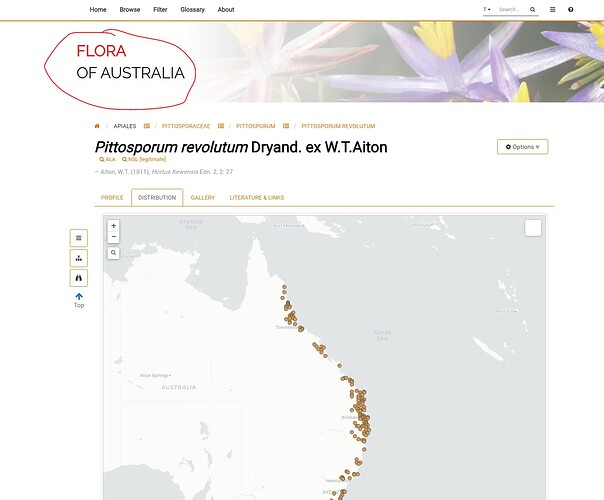None of my iNat observations are going to ALA. A previous but now closed discussion indicated I need to set my permissions correctly. See pic of permissions page. Which option/s should I choose?
hey Roz, welcome to the forum
the only copyright licence that doesn’t allow your records to go into the ALA is All Rights Reserved; any other option will allow them to go in.
Can I ask what makes you say your records are not going into the ALA? I can see some of them in there. For example, this record of yours https://www.inaturalist.org/observations/241567112. Here it is in the ALA: https://biocache.ala.org.au/occurrences/6cde564d-c390-426a-9610-2ecbc8f21be7
@roz_rogers while you are at it, best concider an open licence (CC-BY NC is fine, more open is better ;-) ), that would also make it possible for your observations to be shared via GBIF (Global Biodiversity Information Facility).
Observations that are shared via GBIF: Research-grade observations with CC0, CC BY, or CC-BY NC licenses.
https://help.inaturalist.org/en/support/solutions/articles/151000170346-which-inaturalist-observations-are-exported-for-gbif-and-how-often-does-this-export-happen-
Thank you! I only checked some of them randomly … so thought none were going up. It’s good to know some of them made it.
Can you paste some links here of ones that don’t seem to be going in; based on your licence, all of them should be going in
Thank you!! That’s what I needed to know.
I am an iNat dummy, but I will try to do that for you.
I don’t know how to find the link to copy it, but my Pittosporum revolutum from 05/09/22 is not in ALA.
I will keep looking and send you more.
How do I find the links?
that record is also definitely in the ALA, here it is in the ALA: https://biocache.ala.org.au/occurrences/d82f6198-cd00-40e0-9fc8-712421abf91d
what made you think this one wasn’t in the ALA?
??? Clearly I am doing something weird. My process: Do a google search e.g. on that particular pittosporum, then scroll down until I find the ALA link, follow that … scroll down the ALA page until I see the map … my observation isn’t there.
when I follow your steps, I can also find your record
- I search for Pittosporum revolutum in google
- I click the ALA link (https://bie.ala.org.au/species/https://id.biodiversity.org.au/node/apni/2907274)
- Click view and download occurrence records, which takes me to https://biocache.ala.org.au/occurrences/search?q=lsid:https://id.biodiversity.org.au/node/apni/2907274#tab_recordsView
- Click on the map tab and start to zoom in where your iNat record is from
- Your point shows on the map:
Aha!! I think my problem is this … when you asked why I thought it wasn’t there … I just did the same google search on BOTH my phone and my tablet. The tablet version shows a different distribution map to the phone search version.
The phone version shows my observation. The tablet one doesn’t. Will send you a screen shot of the tablet version.
ok I see the problem! That screenshot is not of an ALA page, it’s a Flora of Australia page. Each species profile in the Flora includes a distribution map that is derived from the ALA, but the records shown there are only herbarium specimens. So you haven’t been looking in the ALA
okay, when I click the ALA link on my tablet, this is the page it takes me to. I can’t find your next instruction 3. there.
d’oh Roz.
thank you!! Just tried that, it asked me so sign in, then said " the app is not currently accessible and the app developer is aware of the issue. You will be able to log in when the app is reactivated."
Thank you so much for your patient help. I will try again later.
Slightly skewed from the original problem - but I never did find an explanation for why GBIF finds SA unacceptable but considers NC (which seem far deeper into what might be a grey area for their users) just fine …
I know the world is split between people who like and revile copyleft - but the people who dislike it haven’t appeared to make a world that innately guarantees things shared openly will remain that way without it yet - and it’s not obvious to me how that’s a conflict for GBIF?
There is some discussion of their decisions about which licenses to accept (and why they allow NC) here: https://www.gbif.org/terms
From what I understand, the Share Alike and No Derivatives clauses can cause difficulties for things like datasets, where one might be using data from different sources with different licenses or not using all the data in a dataset.





